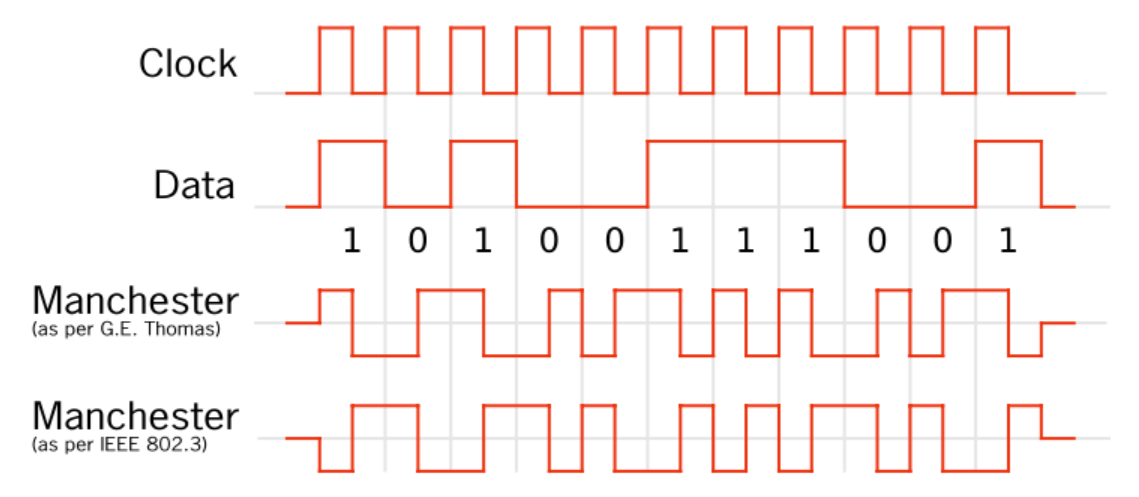 |
| Figure 1: An example of Manchester coding |
Manchester line encoding was indeed developed at the University of Manchester in the 1940s for use with the University's Manchester Mark I computer, one of the world's first stored-program computers. Manchester line encoding facilitated data storage on the computer's magnetic drum. Today, Manchester coding comes into play in a wide variety of applications in both data storage and digital data communications. For example, it's used widely in 10Base-T Ethernet applications. Manchester is a versatile protocol that can be tweaked and customized in a number of ways.
Let's take a look at some of the fundamental characteristics of a Manchester-encoded data stream. In Manchester coding, the encoding of each data bit has at least one transition and occupies the same amount of time. The DC component of a Manchester-encoded data signal is not dependent on the data and carries no information itself. Thus, the signal can be conveyed using media that does not require a DC component (such as Ethernet). Manchester data signals can be inductively or capacitively coupled. Also, because voltage transitions occur frequently in proportion to the clock rate, a clock signal is recoverable from the data stream. A nice bonus is that the bus can be electrically isolated with nothing more than a 1:1 isolation transformer.
In the Manchester scheme, each bit is transmitted in a fixed time, or period. In the G.E. Thomas convention, a zero is expressed by a low-to-high transition and a one by a high-to-low transition. This is reversed in the IEEE 802.3 convention (Figure 1). The transitions that signify a bit transition typically occur in the middle of the period; transitions occuring at the start of a period do not count as data. These serve only to put the signal in the right state to send the next bit transition.
There are many specialized data-communication protocols based on Manchester line encoding, such as the Digital Addressable Lighting Interface (DALI) for control of building lighting and the Peripheral Sensor Interface 5 (PSI5) used to connect sensors to controllers in automotive applications. In such cases, the basic Manchester scheme is modified to create a more complex, specialized protocol. Many system integrators are also modifying the Manchester scheme in unique ways that do not conform to any standard protocol.
In upcoming posts, we'll look at more serial-data protocols as well as how to use an oscilloscope to decode and debug them, whether standards-based or otherwise.
1 comment:
Hi very nice post. Very useful information regarding isolation transformer. Thanks for sharing this useful blog.
Post a Comment